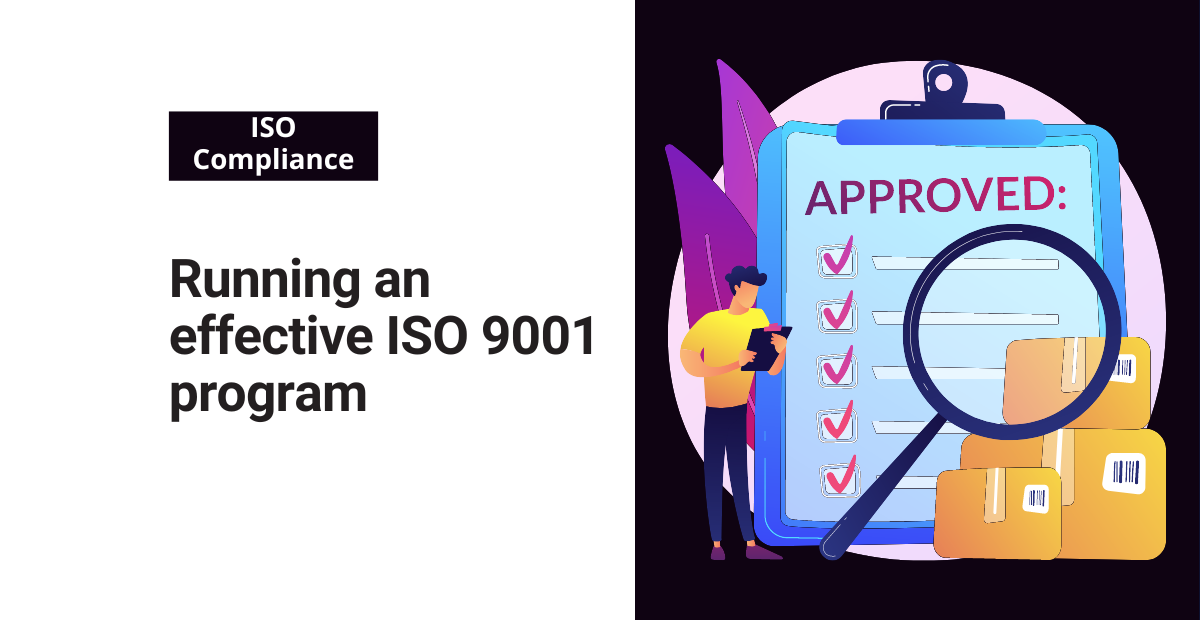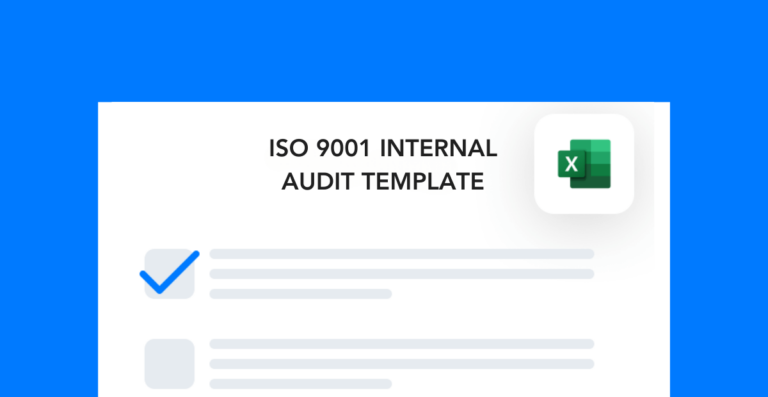I’ve had the opportunity to work with a variety of organizations in my career as an EHS professional. One aspect of my job that I’ve had extensive experience with is how to implement an ISO 9001 program.
I’ve seen how effectively managed ISO audits can greatly benefit an organization, but I’ve also seen firsthand how poor preparation can cause stress and setbacks. In this post, I’d like to share my experience with ISO 9001 audits and provide some tips for preparation that I’ve found to be particularly helpful.
What is ISO 9001?
ISO 9001 is an internationally recognized quality management system (QMS) standard. Organizations use it to demonstrate their commitment to quality assurance and continuous improvement.
The standard is based on several quality management principles, including:
- Strong customer focus
- Involvement of people
- Process-based approach
- Continual improvement cycle
You can achieve ISO 9001 certification through successful completion of a third-party audit. This audit determines whether your QMS meets the requirements of the ISO 9001 standard.
Ways to ensure ISO 9001 compliance
Getting an ISO 9001 certification is pointless if you don’t implement the framework in a lasting way. Over the years, I’ve collected some best practices that you can use to prepare for an audit. In general, you can also use these practices to ensure that your ISO 9001 program is effective and long-lasting.
Understand the standard
It’s important to have a solid understanding of the ISO 9001 standard, its requirements, and how those requirements apply to your organization. Once you fully understand the standard, you can identify areas of your QMS that need improvement.
Get everyone involved
Encourage your employees to get involved in the audit preparation process. This helps to build a sense of ownership and responsibility when it comes to ISO compliance.
It also helps to ensure that everyone is aware of the standard’s requirements. When rolling out your ISO 9001 program, you should teach your workers the role they play in its success.
Plan and prioritize
Any time you adopt a new program or framework, make a plan prior to implementation. Your plan should include all the modifications that you will make to existing processes, equipment, etc.
Once you have a plan, rank each step according to importance. Focus on the key elements of the standard and ensure that you have control measures in place for each of them.
Review processes and procedures
Take a close look at all your processes and procedures and make sure that they are up-to-date, relevant, and compliant with the ISO 9001 standard. This is something you should do regularly, regardless of whether you have an upcoming audit or not.
Depending on your industry, you may consider adopting a management of change (MOC) process for complex processes. Tracking modifications or complex compliance-related tasks using MOC software can completely transform the simplicity of your ISO 9001 program.
Engage consultants and customers
If you’re unsure about any aspect of the standard, consider engaging an ISO 9001 consultant. They can provide guidance and support to help you to prepare for audits.
Alternatively, you can also invite your customers to provide feedback on the quality of your products. This is an easy and valuable way to find areas of improvement within your QMS.
Keep detailed records
A solid recordkeeping system is essential for all areas of compliance, not just your ISO certifications. Having detailed records of your internal assessments and external audits gives you perspective each time you reevaluate your approach.
Make sure that you have clear and accurate records of all your processes and procedures, including any changes that have been made. This is essential for proving compliance with third-party auditors.
Practice before an audit
It might seem silly to practice for an audit. But you’d be surprised by how much more confident you’ll feel if you’ve gone over your processes and procedures beforehand.
Before inviting a third party into your facility for an audit, go through the steps yourself and find areas of improvement.




